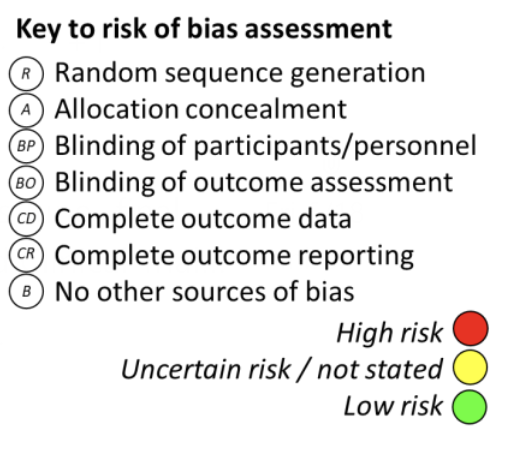
ISN Academy: Haemodialysis
Easing into it – pilot trial paves the way for incremental haemodialysis studies
A multicenter feasibility randomized controlled trial to assess the impact of incremental versus conventional initiation of hemodialysis on residual kidney function.
Vilar et al. Kidney Int 2021. DOI: 10.1016/j.kint.2021.07.025
Summary: Fifty-five incident haemodialysis patients with residual kidney urea clearance of ≥ 3mL/min/1.73m2 were randomised to 12 months of standard haemodialysis sessions of 3.5-4 hours three times per week, targeting a dialysis standardised (std) Kt/V above 2, or to incremental dialysis. Incremental dialysis involved starting with twiceweekly sessions and increasing the haemodialysis dose as needed to maintain a total (kidney + dialysis) std Kt/V above 2, which was re-assessed monthly. Fifty-four percent of the standard care arm withdrew from the study for reasons such as transplantation, request for less frequent therapy, conversion to home haemodialysis or consent withdrawal, compared to 28% in the incremental group. Overall dialysis-related serious adverse events and hospitalisations were less common in the incremental group (IRR 0.47, 95% CI 0.27 to 0.81). Incremental dialysis was associated with lower serum bicarbonate levels and a trend towards higher phosphate binder requirements. There was no significant difference in the preservation of residual kidney function, blood pressure, extracellular fluid events, or a range of patient-reported outcome scores. Incremental dialysis was less expensive with median total costs of £19,875 per patient, compared with £26,125 in the standard dialysis arm..
Comment: Incremental dialysis has many hypothetical benefits supported by observational data – it may better preserve kidney function, may be more tolerable for patients, may be gentler for maturing arteriovenous fistulae, and may be more cost effective. This study suggests that (in the context of a carefully monitored program) incremental dialysis is safe. The trial was not powered to detect a difference in residual kidney function or other clinical parameters. With the high number of patients excluded, declining to participate, or withdrawing, it seems important for future studies to carefully consider pragmatic approaches that minimise the burden of study participation and maximise study generalisability. Multiple RCTs are registered or in design, so we look forward to more data in coming years to shed light on this important question.
ISN Academy: Hypertension
Similar change in LV mass with spironolactone and chlorthalidone in CKD
Effects of spironolactone and chlorthalidone on cardiovascular structure and function in chronic kidney disease
Edwards et al. CJASN 2021. DOI : 10.2215/CJN.01930221
Summary: 154 patients with non-diabetic stage 2-3 CKD receiving ACEI or ARB treatment and well controlled blood pressure were randomly assigned in a 1:1 ratio to receive either spironolactone 25mg or chlorthalidone 25mg. Left ventricular mass reduced similarly in both groups at 40 weeks (mean change -8.3g (95% CI -11.3, -5.3) vs. -4.5g (95%
CI -7.5, -1.5), respectively; p=0.08). There was no difference in change in systolic blood pressure (-11mmHg (95% CI – 14, -8) vs -8mmHg (95% CI -12, -5); p=0.3) or in a range of other cardiovascular and kidney risk markers: carotidfemoral pulse wave velocity, left ventricular volumes, ejection fraction, urinary albumin creatinine ratio, and NT proBNP. Hyperkalemia was more common in the spironolactone group (n=12) compared with chlorthalidone (n=2)(p=0.02).
Comment: The main hypothesis of the study was that spironolactone would prove superior to chlorthalidone at reducing LV mass due to inhibition of pro-inflammatory, fibrotic and hypertrophic actions of aldosterone. The results appear to emphasize the central importance of BP lowering for cardiovascular health, but do not rule out a more modest additional benefit from mineralocorticoid receptor antagonism (MRA) than could have been detected with a study of greater size and power. In addition, when one considers that the non-steroidal MRA, finerenone, has recently been shown to reduce kidney outcomes and hospitalized heart failure in people with diabetic kidney disease, this study suggests that the potential role of chlortalidone in reducing cardiovascular morbidity might be under-explored.
ISN Academy: Diabetes
Music to our ears? FIGARO-DKD investigators show finerenone helps keep patients with type 2 diabetes and CKD out of hospital with heart failure
Cardiovascular events with finerenone in kidney disease and type 2 diabetes
Pitt el al. NEJM 2021. DOI: 10.1056/NEJMoa2110956
Summary: 7437 participants with diabetes and CKD (stage 1 with macroalbuminuria or stages 2-4 with microalbuminuria) on maximal RAS inhibitor therapy were randomised to finerenone or placebo. The incidence of the primary composite outcome of death from cardiovascular causes, nonfatal myocardial infarction, nonfatal stroke, or hospitalization for heart failure was significantly lower in the finerenone group than in the placebo group (HR 0.87; 95% CI 0.76 – 0.98; p=0.03). The difference resulted primarily from the lower rate of hospitalization for heart failure in the finerenone group (HR 0.71; 95% CI 0.56 – 0.90). The incidence of the secondary composite outcome of kidney failure, a sustained decrease from baseline of at least 40% in the eGFR, or death from kidney causes was not different (HR 0.87; 95% CI 0.76 – 1.01). There was no significant difference in the overall frequency of adverse events, however the incidence of hyperkalemia was higher in the finerenone group (10.8%) than in the placebo group (5.3%). This resulted in treatment discontinuation in 1.2% and 0.4% of patients, respectively
Comment: The burden of cardiovascular morbidity and mortality is high among patients with type 2 diabetes and chronic kidney disease. This trial was designed to explore the cardiovascular benefits of finerenone in a diabetic population with milder forms of CKD as a follow up to their study showing benefit for stages 3 and 4 CKD with macroalbuminuria. This trial demonstrated that finerenone significantly reduced the risk of hospitalization for heart failure in patients who had already been treated with RAS-inhibitors at a maximum dose and was the main driver of recorded benefit of this intervention in the composite endpoint. The effect of finerenone on other cardiovascular and kidney outcomes were less pronounced. These findings support consideration of the use of finerenone in patients with type 2 diabetes and CKD, although with care to monitor for hyperkalaemia.
ISN Academy: Acute Kidney Injury
Implementing a KDIGO treatment bundle in high risk patients post cardiac surgery is feasible and may help prevent moderate to severe AKI
Prevention of cardiac surgery-associated acute kidney injury by implementing the KDIGO Guidelines in high-risk patients identified by biomarkers: The PrevAKI-Multicenter Randomized Controlled Trial
Zarbock et al. Anesthesia and Analgesia 2021. DOI: 10.1213/ANE.0000000000005458
Summary: Two hundred and seventy-eight participants at high risk for AKI identified by the urinary biomarkers TIMP2 and IGFBP7 were randomized to adherence to the KDIGO bundle of AKI after surgery (optimization of volumestatus and hemodynamics, functional hemodynamic monitoring, avoidance of nephrotoxic drugs and prevention of hyperglycaemia) or standard critical care. The primary outcome of compliance with the KDIGO recommendations was significantly better in the intervention group (65.4%) than the control group (4.2%). Overall AKI rates were not statistically different between groups (46.3% intervention versus 41.5% control group; absolute risk reduction (ARR) -4.8% (95% CI, -16.4 to 6.9); P= 0.42). However, the occurrence of moderate and severe AKI was significantly lower in
the intervention group (14% vs 23.9%; ARR 10% (95% CI, 0.9-19.1); P= 0.034).
Comment: Acute kidney injury is one of the most common complications post cardiac surgery and carries significant risks of morbidity and mortality. In this pilot study, implementation of the KDIGO bundle was feasible and the occurrence of moderate and severe AKI was lower in the intervention group. Further studies are planned to definitively demonstrate whether implementation of the KDIGO bundle reduces AKI.
ISN Academy: Genetic Kidney Diseases
Metformin safety, tolerability and efficacy in ADPKD
Primary results of the randomised trial of metformin administration in polycystic kidney disease (TAME PKD)
Perrone et al. Kidney Int 2021. DOI: 10.1016/ j.kint.2021.06.013
Summary: Ninety-seven participants aged 18-60 years with autosomal dominant polycystic kidney disease (ADPKD) and eGFR >50ml/min/1.73m2 were randomised 1:1 to receive metformin (uptitrated to target dose of 1000mg twice daily) or matched placebo. After 2 years follow up, tolerability (as assessed by the Gastrointestinal Symptoms Rating Scale score) was not significantly different between groups and did not change over time of follow up (annual change –0.02, 95% CI 0.09-0.05 for metformin group, and –0.06, 95% CI 0.12-0.02 for placebo group). Height adjusted total kidney volume (htTKV) and decline in eGFR (assessed as secondary outcomes) also were not found to be significantly different between groups. Study medication adherence, disease-related symptoms (i.e. abdominal pain and fullness) and adverse outcomes (including lactic acid levels and hypoglycemia) were similar between groups. Patients taking tolvaptan were excluded from the study.
Comment: Metformin may inhibit cellular cyclic adenosine monophosphate production, a key mediator of cyst growth. Given its low cost and ease of accessibility, is an attractive treatment option for ADPKD in a sphere where medical treatment options are currently limited. In this phase 2 study, safety and tolerability appear adequate – although importantly, 43% of participants in the metformin group did need drug dose reduction due to inability to tolerate high doses. Decline in GFR over time in the metformin group was numerically less, but not statistically significant, and the study was not powered to determine treatment efficacy. A similar prospective, randomised controlled double blinded study was also published in AJKD this month by Brosnahan et al, similarly finding metformin to be safe and tolerated well in patients with ADPKD over a 12-month period. These provide support for larger, more generalisable studies are needed to assess for potential effects on slowing progression of disease.
ISN Academy: Haemodialysis
When words fail: supplement care for malnourished haemodialysis patients
Effectiveness of renal-specific oral nutritional supplements compared with diet counselling in malnourished hemodialysis patients
Limwannata et al. Int Urol Nephrol 2021. DOI: 10.1007/s11255-020-02768-5
Summary: Eighty six malnourished haemodialysis patients were randomised to the ONCE Dialyze supplement group, NEPRO supplement group or dietary counselling alone. Participants were defined as malnourished if they had a serum albumin <38 g/L, energy intake <25 kcal/kg/day or protein intake <1 g/kg/day. Nutritional status was assessed using the Malnutrition Inflammation Score (MIS), serum albumin levels and estimated dietary intake of nutrients. Each outcome was assessed at baseline and after 30 days. A statistically significant improvement was demonstrated in MIS percentage change in the ONCE Dialyze group -20.0 % (95% CI -40.5 to -17.4) and NEPRO group -23.9% (95% CI -37.2 to -10.6) compared to dietary counselling alone group 12.1% (95% CI -19.2 to 43.4) (p=0.006). Improved percentage change in serum albumin was demonstrated in the ONCE Dialyze and NEPRO groups compared to dietary counselling alone (p=0.039).
Comment: Limwannata et al evaluated renal-specific oral nutrition supplementation with dietary advice compared to dietary advice alone. This study adds to the existing literature suggesting short-term supplements may improve nutritional status in haemodialysis patients without influencing serum potassium levels. Strict inclusion criteria in this trial may limit the generalisability of the findings. Larger trials with longer periods of intervention and follow up, with assessment for quality of life and mortality outcomes will help determine the broader clinical utility of these findings.




